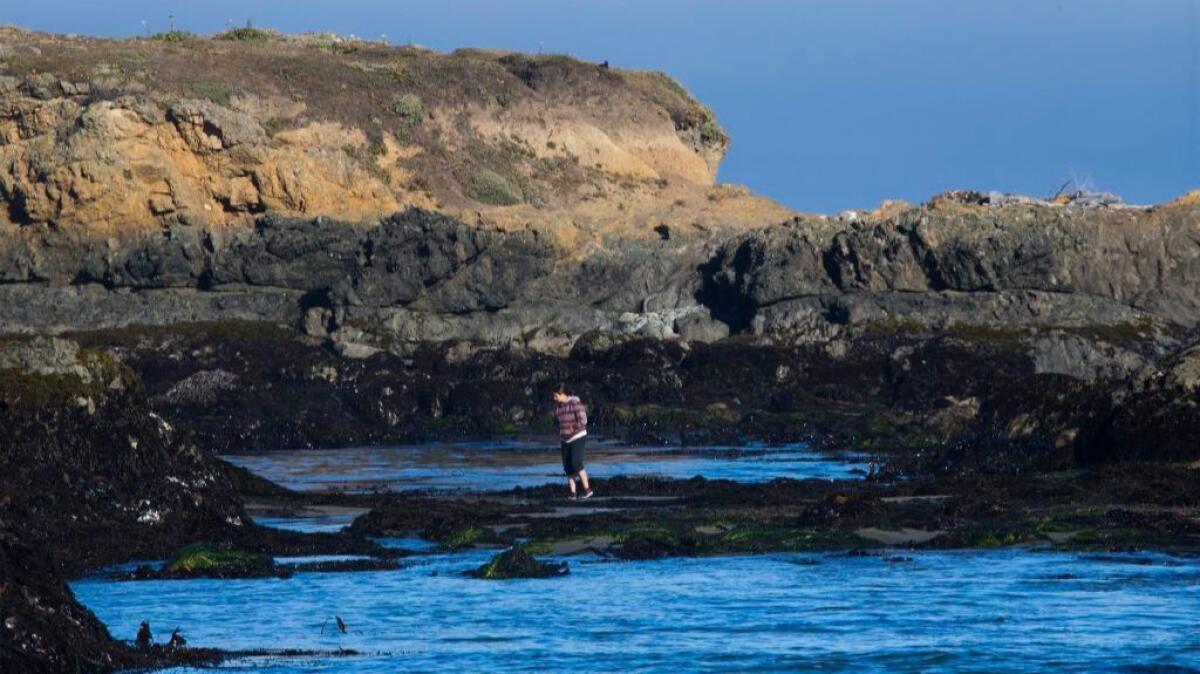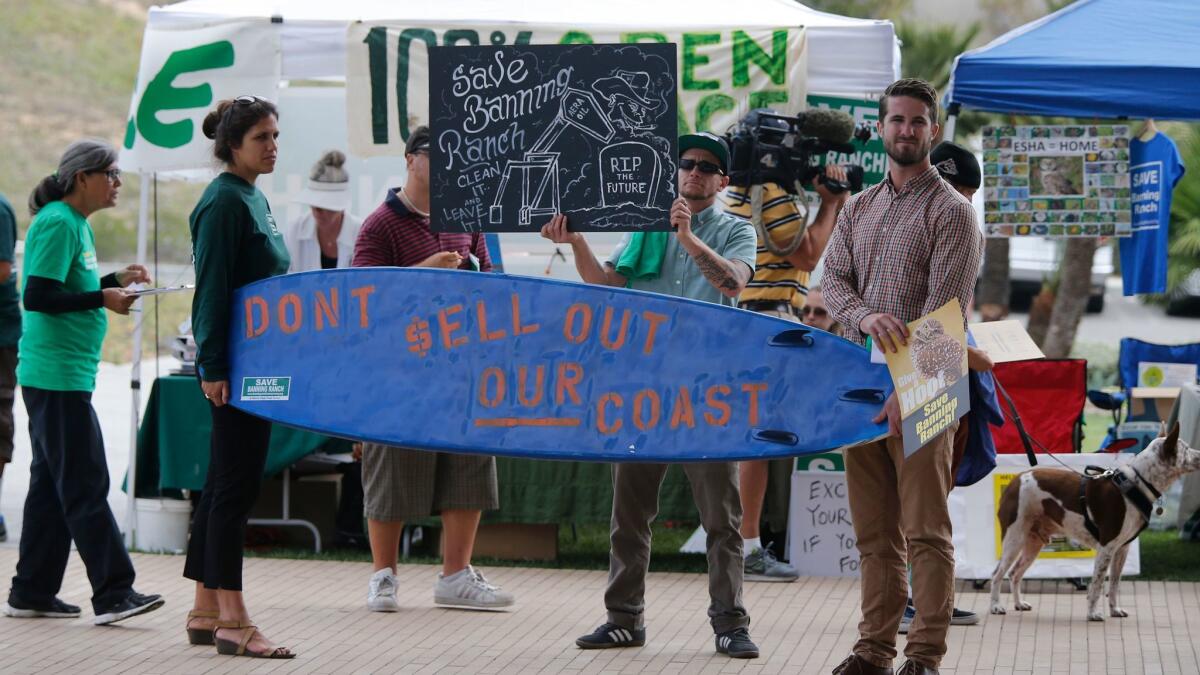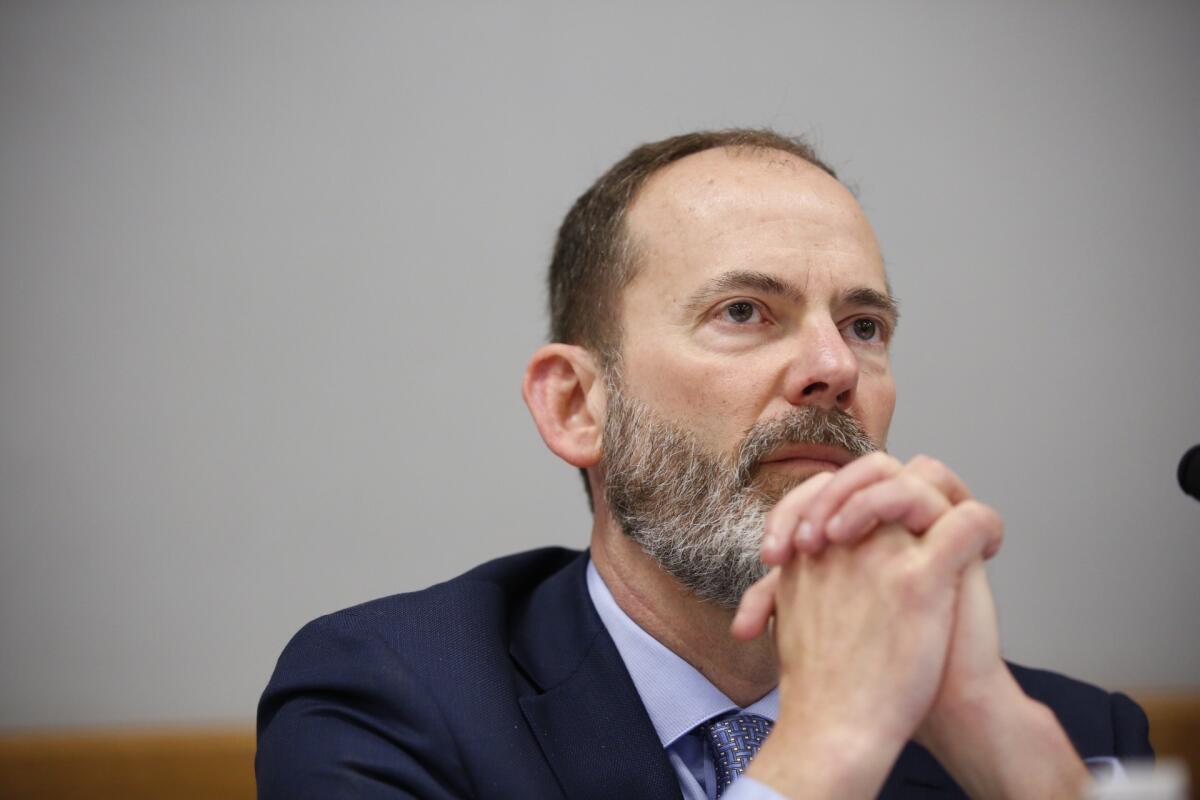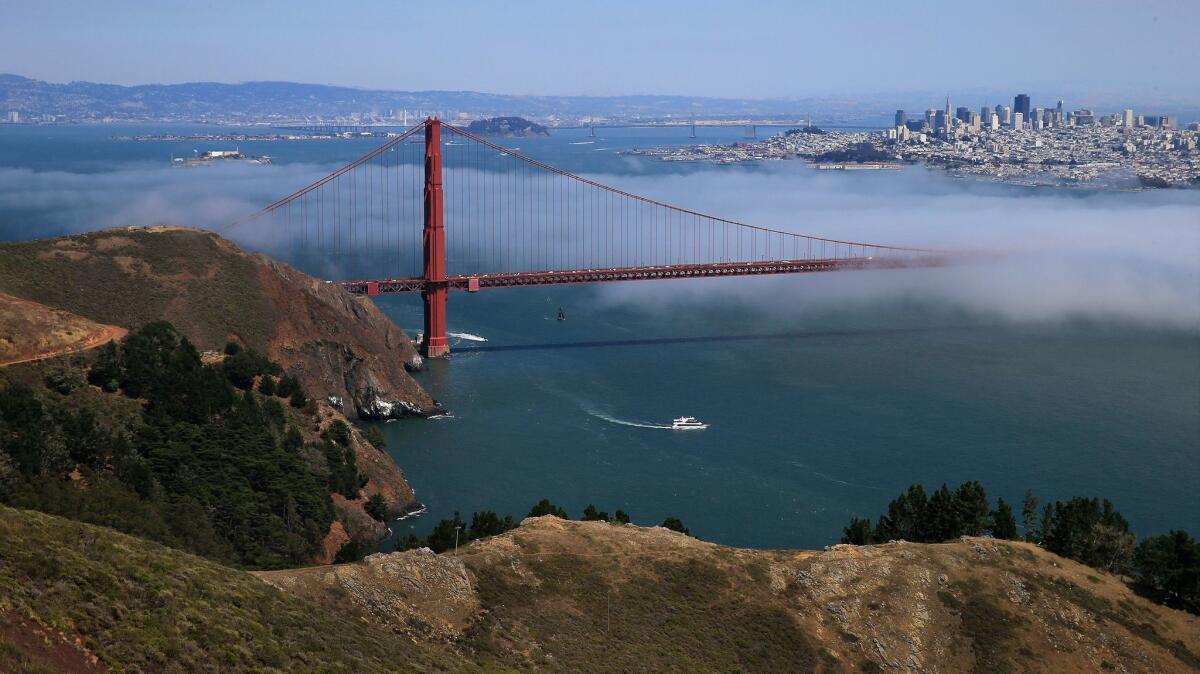Column: After tons of drama with the California Coastal Commission, things are looking up

- Share via
Yes it’s true, sharks are everywhere along the California coast this summer. But by all appearances, a far bigger threat to your enjoyment of the state’s fabulous beaches has been contained for now.
It’s a new day at the California Coastal Commission.
You remember the drama last year, right?
I don’t get to take up an entire section of the newspaper, so I can only touch on the many ways in which the coast was imperiled by conflicts of interest, the clout of pro-development forces, the undermining of staff experts and a head-smacking lack of professionalism among certain members of the Coastal Commission.
In February 2016, commissioners — appointed by Gov. Jerry Brown and legislative leaders — stunned and angered hundreds of spectators when they summarily dismissed the agency’s respected executive director. Charles Lester had staunchly defended his staff’s independence from outside influence while adhering to the letter of the law on coastal preservation, and he made a dramatic appeal to keep his job, to no avail.
But in an unintended way, the firing was a blessing.

A disaster turned out to be a blessing
“They got away with getting rid of Charles,” said former Commissioner Sara Wan, “but they didn’t get away with the public response.”
In fact, the fall of Lester has led to the toppling of a hyperactive commission that seemed at times to have forgotten its duty to the Coastal Act, and to the guiding principle that the unsurpassed 1,100-mile coast is not anybody’s — it’s everybody’s.
First came intense media scrutiny and public attention. Then came lawsuits, proposals for legislative reforms and some badly needed turnover.
One of the biggest gasbags and disruptive forces on the commission resigned. Another commissioner, who told me she didn’t see what was wrong with her staying at the home of a lobbyist who had business before the agency, was forced out because she lost a reelection bid in her home county. Brown’s intrusive nonvoting appointee to the commission, who seemed at times to be commandeering the agency, quit her job.
The replacements, including new commissioners Donne Brownsey and Aaron Peskin, are getting good reviews in the early going. So is Chairwoman Dayna Bochco, who runs a much tighter, more focused meeting than her predecessor.
Those keeping an eye on the coast are being cautious, knowing the influences of money and power are always lurking. In California, coastal property is gold, and someone always wants to turn public treasures into private trophies.
But for now, there’s guarded optimism.
“I do see this as a much improved commission,” Wan said. She added that only a few commissioners are still taking so-called ex parte, or private meetings, with those who want to speak for or against proposals under consideration by the commission.
“So the influence of lobbyists has got to be reduced,” she said.

State Senate Pro Tem Kevin de León, (D-Los Angeles), who appointed Peskin to the commission and is interviewing candidates for another open slot, told me he sees considerable improvements.
“The commission no doubt is emerging from a difficult period in its history, after several years of turmoil,” he said.
Surfing with inner-city kids
As for his next appointment, De León said he wants someone “who cares deeply about our coast” and wants to make it more accessible to all, regardless of race or income. He said he was inspired on a recent surf outing to Zuma Beach with inner-city kids, most of whom had never seen the ocean.
De León will be replacing the just-departed Mary Shallenberger, who served 13 years and was admired by many for her civility, fairness and diligence in defending the coast as a public asset rather than a private playground. Shallenberger told me she walked away feeling pretty good about the recent change in culture and tone.
“This commission is stronger and more cohesive, and I think it’s a terrific time right now,” Shallenberger said.
A sea change at meetings
“It’s remarkable to see the change,” said Susan Jordan of the California Coastal Protection Network. “There is no more foul language. There is no more yelling at people from the dais…. I’ve seen greater respect between commissioners, and they’ve been really thoughtful on hard deliberations.”
Last month, the commission unanimously approved an agreement to stop sand mining by Mexico-based Cemex, whose operations had led to years of beach erosion on Monterey Bay shores. The agreement called for Cemex to sell the property at a reduced rate to a nonprofit that will preserve the property and ensure public access.
And last week, the state won a court victory in the ongoing fight to restore public access to Martins Beach, where Silicon Valley billionaire Vinod Khosla has locked the gate.
“We are hopeful that the day will come when the locks are cut off the gates and the public can once again walk across the sand at Martins Beach and go for a swim,” said Coastal Commission Executive Director Jack Ainsworth, a respected veteran who replaced Lester early this year and helped restore morale.
This is not to say everything’s A-OK at the agency. It’s still a work in progress, De León’s next appointment is critically important, and a few holdovers from the dark days are still taking up space on the commission, including the short-fused Mark Vargas, who F-bombed spectators from the dais last year. This is the same character who famously met with U2 guitarist David Evans at a concert in Ireland just before voting to approve Evans’ controversial hillside development in Malibu. For his next trick, Vargas is running for state Assembly.
Saving the coast from those who see it as a row of trophies on the Monopoly game board is a never-ending job. We’ll get a better test of whether the commission is up to the task when the proposed Huntington Beach desalination plant comes up for review soon. When it does, powerful corporate forces will go up against environmentalists at a time when statewide water policy, air and water quality and climate change are all works in progress as Brown approaches his last dance.

A year ago, I drove the entire coast, writing about what’s been saved and what’s been lost. Last week, I tagged along on a Coastal Commission field trip to the beautifully restored Malibu Lagoon and then to Puerco Canyon, not far from Pepperdine University.
High on a ridge overlooking the sea, near the Coastal Slope Trail, Ainsworth said he’d visited that very spot many times over the years. He’d been there to turn back a proposed condo development, he’d been there to turn back Bob Hope’s plans to build a golf course, and he’d been there trying to persuade director James Cameron to sell the property so it could be shared “with the rest of California.”
Cameron sold it to the Mountains Recreation and Conservation Authority, and very soon, the site will become a campground for L.A. County foster children.
Along the coast, things are looking up.
Get more of Steve Lopez’s work and follow him on Twitter @LATstevelopez
ALSO
Jerry Brown talks a green game. So why isn’t California tougher on these polluters?
My close encounter with a shark got me out of the water — but not for long
The mystery homeless woman of Pacific Palisades and the village that helped her home
More to Read
Sign up for Essential California
The most important California stories and recommendations in your inbox every morning.
You may occasionally receive promotional content from the Los Angeles Times.











